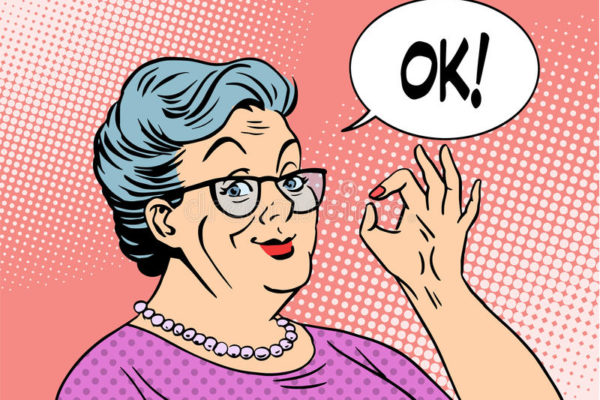To claim that the existence of men’s rights activist (MRA) movements are justified or legitimate is wrong. That is not to say that some of the inequalities and biases highlighted by the movement are not valid – they most definitely are. Bias against fathers in custody cases, male victims of sexual assault and toxic masculinity are all very real issues and deeply harmful towards men. However, while on paper the MRA movement is all about solving these problems, the systems of gender bias that cause them are often overlooked. In other words, MRAs emphasise the need to be anti-feminist (and sometimes even anti-female), rather than pro-male. To clarify, however, it is not the fact that MRAs exist solely in opposition to another activist movement that delegitimises their cause. Rather, it is the fact that they purposefully, misguidedly and often viciously direct their rage towards the group of people who are most likely to be their strongest allies – feminists. This fundamentally undermines their stated aims and stops them from being considered justified in principle.
Warren Farrell, widely considered to be the “Father” of the MRA movement, initially became involved in gender studies while at university, even joining the National Organisation for Women’s New York chapter in the 1960’s before publishing his 1974 book “The Liberated Man”. His work argued that women were not the only ones hindered by sexism – gender roles hurt men too. It is important to note that his work was vastly popular with feminists of era, including Gloria Steinem and Barbara Walters. Female feminists were not threatened or hurt by Farrell shining a light on the hurt faced by men in an unjust society – they embraced it. However, when (after a nasty divorce) Farrell’s work shifted to claiming women were only after power, not equality, feminists began to distance themselves and wronged men began to flock. They engaged with the notion of having somewhere to focus their overwhelming disenchantment with the state of the world and their own lives, as well as feeling strongly about the issues faced by men. As the movement grew it found a voice in online forums, internet chatrooms and other dark corners of the web. There it seemed to mutate and multiply, becoming a source of harassment and online abuse, targeted at out-
spoken women. MRAs, in some instances, even take their bullying to the next level by releasing the personal information of their victims (“doxing”) and even confronting these women in person. This is not to say that MRAs are all inherently misogynistic internet trolls. However, this is the tone often adopted by its more prominent voices, to the point where the entire movement is so warped and incoherent that the opposite of their espoused goal of “equality” is being furthered by their practices.
This is caused by the movement’s unwillingness to recognise an essential fact – men’s issues are feminist issues, just as much as women’s issues. However, due to the increasing social visibility of female empowerment movements, and the increased sharing of female narratives in all forms of media, it feels to a lot of MRAs that women are being prioritised over them. In other words, they feel that the gains made in women’s rights mean a decline in those afforded to men. This is incorrect. A triumph against the patriarchy is very much a triumph for both men and women. Enormous strides have been made with regard to dismantling toxic masculinity and reducing the shocking statistics around male suicide, but there is still along way to go in fully addressing these issues. Conversely, it can often feel as if women are the only group benefiting from feminism, as they have had so much farther to climb.
It is undeniable that historically women have been far more disadvantaged by their sex than men, and when looking
at mainstream media it can feel as though the women’s movement is making daily strides forward, while the progress in male spaces may feel slower and deprioritised.
It is not unreasonable that MRAs feel this way. Men have been placed in an extremely long historic shadow, being expected to solely bear the burden of being hypermasculine, stoic and emotionless in the face of being the sole breadwinner, in what is currently a rapidly changing and often unpredictable economy. Not to mention the small injustices faced every day, such as the emphasis on “women and children” casualties in a tragic news story, the satirisation of both hyper-macho and overly effeminate males alike in popular culture, and the implication that young boys are less emotionally intelligent than females – MRAs have a lot of material to work with. However, every injustice raised by the MRA movement is related to gender bias and patriarchal attitudes. This essentially means that on the other end of every male-centric issue is a female-centric one and vice versa. For instance, when looking at the bias against fathers in Family Court, you can weigh it against the historic pressure placed on women to take on home duties and be the primary nurturer in their respective household. The purpose of this exercise is not to have a dick measuring contest over who is the most oppressed, but rather to show how male issues are inextricably linked to feminism. By dismantling inequality, gender bias and patriarchal oppression, which are the core concerns of the feminist movement, you are consequently solving the issues raised by MRAs. This means that, every time a MRA tries to delegitimise or undermine feminist discourse, they are effectively shooting themselves in the foot.
Feminists aren’t against the valid issues raised by MRAs regarding gender bias – they fundamentally strive for equality of the sexes. Giving women’s issues increased publicity does not mean there is not enough spotlight left for male problems. Dismantling the patriarchy and questioning male privilege does not rob men of anything. Feminists loving women doesn’t mean they hate men, only the systems which cause inequality. The current form of the MRA movement also largely lacks the diversity and intersectionality that has become a hallmark of modern feminism. Yes, it is accurate to say that men are far more likely to end up in prison than women, but it is not the whole picture. Factors including income, education, ethnicity and mental health also need to be considered and advocated for.
Fundamentally, the causes of male discrimination are the same as those that cause female discrimination, and that feminists try to dismantle. Therefore, the MRA movement cannot be considered legitimate, as a movement that works against its own aims cannot then justify its own existence.



